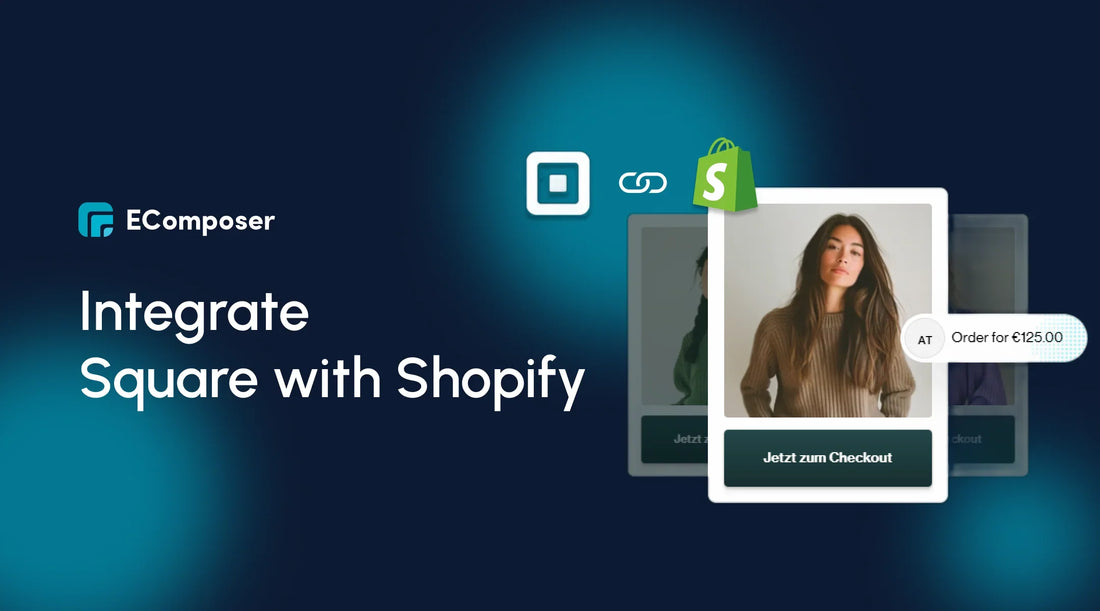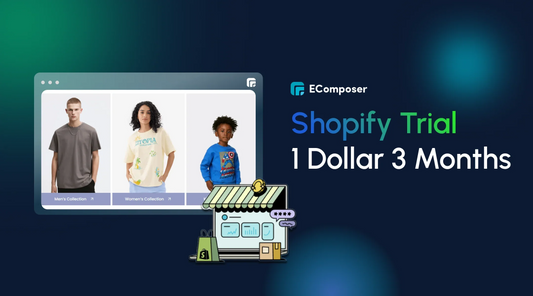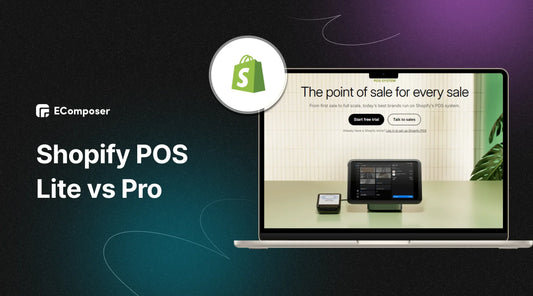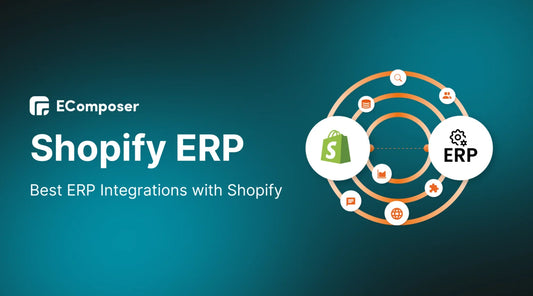Can You Use Square With Shopify? Integration Guide (2025)

Table Of Contents
As an online store owner, you know how important it is to choose the right payment solution. Square is a favorite for in-person sales, while Shopify powers thousands of eCommerce businesses. But can you use Square with Shopify? The answer isn’t as simple as a yes or no.
In this guide, we’ll break down everything you need to know about integrating Square with Shopify in 2025. We’ll explore the available options, the pros and cons, and the best third-party tools to make it work. Whether you’re looking for an alternative to Shopify Payments or want to streamline your in-person and online sales, we’ve got you covered. Let’s dive in!
 Square Quick Overview
Square Quick Overview
What is Square?
Square is a popular payment processing platform designed for businesses of all sizes, especially those with brick-and-mortar locations. Known for its easy-to-use card readers, POS system, and competitive pricing, Square helps merchants accept in-person and online payments seamlessly. Beyond transactions, it offers tools for inventory management, invoicing, and customer insights, making it a well-rounded solution for retail and service-based businesses.
Why Do Merchants Want to Use Square With Shopify?
Many Shopify store owners are drawn to Square because of its robust in-person payment capabilities. While Shopify has its payment processor, Shopify Payments, it may not be the best fit for everyone. Here’s why some merchants want to integrate Square with Shopify:
- Better in-person sales experience – Square’s POS system is a go-to choice for businesses selling at physical stores, markets, or pop-up events.
- Lower transaction fees (for some businesses) – Depending on your sales volume and business type, Square’s fees can be more competitive than Shopify Payments or other gateways.
- Familiarity and existing setup – If you’re already using Square for in-person transactions, switching to another processor just for Shopify can be inconvenient.
- More payment flexibility – Square accepts a range of payment options like contactless and mobile wallets, making checkout faster and more convenient.
While Shopify doesn’t offer a direct integration for Square, there are workarounds. In the next sections, we’ll explore how to make Square work with Shopify and whether it’s the right choice for your business.
Can you use Square with Shopify?
Shopify does not natively support Square as a payment gateway, meaning you can’t simply select Square as your processor within Shopify’s settings. Shopify prefers merchants to use Shopify Payments, which eliminates the need for third-party payment processors.
However, many merchants still want to use Square and Shopify together, especially those who rely on Square for in-person sales but run their online store on Shopify. While direct integration isn’t an option, there are alternative ways to connect Square with Shopify, such as:
- Using third-party apps – Some apps act as a bridge between Shopify and Square, syncing inventory and payment processing.
- Manually reconciling transactions – Merchants can process payments through Square separately and update Shopify orders manually.
- Using Square for in-person sales only – Some businesses use Shopify for online transactions and Square exclusively for face-to-face purchases.
Each of these methods has its pros and cons, which we’ll explore in the next section. If you’re considering integrating Square with Shopify, knowing clearly these payment options will support you make the best solution for your business.
Benefits and Challenges of Using Square With Shopify
While Shopify and Square don’t integrate directly, many merchants still find ways to use them together. Let’s break down the key benefits and challenges of combining these two platforms.
Benefits of Using Square With Shopify
- Seamless In-Person Sales: Square’s POS system is one of the best for in-person transactions, making it a great choice for merchants who sell both online and offline.
- Lower Transaction Fees (For Some Merchants): Depending on your business model and location, Square’s fees may be more affordable than Shopify Payments or other third-party gateways.
- Familiarity & Existing Setup: If you already use Square for in-person sales, switching to another payment processor for Shopify can be inconvenient. Keeping Square lets you maintain a familiar system.
- Flexible Payment Options: Square supports credit cards, mobile wallets (Apple Pay, Google Pay), and even Afterpay, providing a smooth checkout experience for customers.
- Inventory Sync With Third-Party Apps: Some third-party apps allow you to sync Square’s inventory with Shopify, preventing stock discrepancies between your online and physical store.
Challenges of Using Square With Shopify
- No Direct Integration: Shopify does not natively support Square as a payment gateway, requiring workarounds like third-party apps or manual order management.
- Limited Automation: Without direct integration, merchants may have to manually reconcile orders between Square and Shopify, adding extra steps to daily operations.
- Potential Additional Costs: Many third-party apps that connect Square with Shopify charge fees, increasing operational costs.
- Syncing Issues: Even with third-party integrations, syncing inventory, orders, and customer data between Shopify and Square can sometimes be unreliable.
- Shopify’s Additional Transaction Fees: If you use a third-party processor (instead of Shopify Payments), Shopify may charge extra transaction fees, making Square a less cost-effective option.
Is Square a Good Fit for Your Shopify Store?
If you rely on in-person sales, already use Square, and don’t mind using a third-party integration, Square can be a viable option for your Shopify business. However, if you want a more seamless experience with fewer fees, Shopify Payments or another built-in Shopify payment processor may be the better choice.
How to Integrate Square Payments into Shopify
Since Shopify does not natively support Square as a payment processor, you will need to use workarounds to accept Square payments in your Shopify store. Below are the three most effective methods, along with detailed steps to set them up.
1. Using a Third-Party App to Connect Square With Shopify (Recommended Method)
The easiest and most seamless way to integrate Square with Shopify is by using a third-party app that syncs inventory, payments, and orders between the two platforms. Popular apps for this integration include:
- SKU IQ automates inventory syncing and payment processing between Square and Shopify.
- Zapier creates custom automation between Square and Shopify without coding.
- Square Sync is a dedicated tool for connecting Square transactions with Shopify orders.
Steps to Integrate Square With Shopify Using a Third-Party App
Choose a third-party app
Access the Shopify App Store and look for Square integration apps.
Read reviews and compare features before selecting one.
1. Install the app on Shopify
- Click "install" on the app listing page.
- Follow the installation steps and approve necessary permissions.
2. Connect your Square account
- Open the installed app and log in with your Square credentials.
- Grant the app permission to sync data between Shopify and Square.
3. Set up inventory and order syncing
- Configure how you want inventory updates to work (real-time, scheduled, or manual).
- Choose whether Square orders should automatically appear in Shopify.
4. Customize payment processing settings
- Decide how Square will handle payments made through Shopify.
- Enable transaction tracking for better reporting.
5. Test a transaction
- Place a test order on your Shopify store to see how everything works.
- Check if the order appears correctly in both Shopify and Square dashboards.
Pros of Using a Third-Party App
- Full automation: Orders, inventory, and payments sync without manual work.
- Seamless checkout: Customers can pay using Square while staying on Shopify.
- Time-saving: Reduces the need for manual reconciliation.
Cons of Using a Third-Party App
- Additional cost: Most apps require a paid subscription.
- Potential sync delays – Some apps may have a slight lag in updating inventory.
- Complex setup: Requires initial configuration for smooth operation.
Best For: Merchants who want automated syncing between Square and Shopify without manual work.
2. Using Square Online Checkout Links (Simplest Method)
If you only need a basic Square payment option, you can use Square Online Checkout Links. This method does not fully integrate Square with Shopify but allows customers to pay via Square on a separate checkout page.
Steps to Use Square Online Checkout Links in Shopify
1. Log in to Square Dashboard
- Go to Square Dashboard and sign in to your account.
- Navigate to the Online Checkout section under the "Payments" tab.
2. Create a payment link
- Click "Create Checkout Link" and select the type of product or service you want to sell.
- Set the price and any additional details needed for checkout.
3. Copy the checkout link
- Once the link is generated, click "Copy" to save the URL.
4. Add the link to Shopify
- Go to your Shopify admin panel.
- Edit your product pages or checkout options.
- Paste the Square checkout link as a button or hyperlink.
5. Test the checkout process
- Click on the Square checkout link from your Shopify store.
- Complete a test transaction to ensure payments go through correctly.
Pros of Using Square Online Checkout Links
- Easy to set up: No need for advanced configurations or additional apps.
- No extra costs: No third-party app fees, only Square's transaction fees.
- Works instantly: No waiting period for integration approval.
Cons of Using Square Online Checkout Links
- Not a seamless experience: Customers are redirected away from Shopify during checkout.
- No automatic inventory sync: Orders must be manually updated in Shopify.
- Limited branding options: Square’s checkout page cannot be fully customized.
Best For: Small businesses or those selling in-person and online separately without full integration.
3. Manually Reconciling Shopify Orders With Square (For In-Person Sales)
If you mainly use Square for in-person sales but manage online orders through Shopify, you can keep both platforms running separately while manually tracking sales and inventory.
Steps to Manually Reconcile Square Sales With Shopify
1. Use Shopify for online orders
- Accept online payments using Shopify Payments, PayPal, or other payment gateways.
- Manage digital transactions directly within Shopify.
2. Use Square for in-person sales
- Process face-to-face transactions using Square POS or a Square Reader.
- Accept cash, credit cards, or digital payments through Square.
3. Manually update inventory
- Each time you sell a product in-store using Square, update the stock levels in Shopify manually.
- Use spreadsheets or inventory management software if needed.
4. Export sales reports
- Download reports from both Shopify and Square to compare revenue streams.
- Reconcile transactions weekly or monthly for accurate financial tracking.
Pros of Manually Reconciling Shopify and Square
- No extra integration costs: No need to pay for third-party apps.
- Full control: Merchants manually track all payments and inventory.
- Best for businesses with separate sales channels: Works well if Shopify is used for online sales and Square for in-person sales.
Cons of Manually Reconciling Shopify and Square
- Time-consuming: Requires manual inventory updates and order tracking.
- Higher risk of errors: Human mistakes can cause mismatches in stock levels.
- No real-time syncing: Orders and payments are not automatically linked.
Best For: Businesses that sell online and in-store separately and do not need real-time syncing between Square and Shopify.
Which Square-Shopify Integration Method Is Right for You?
|
Method |
Best For |
Automation Level |
Ease of Setup |
|
Third-Party App |
Merchants who want full integration (payments + inventory sync) |
🔄 High |
⭐⭐⭐⭐ |
|
Square Checkout Links |
Small businesses need a simple Square payment option |
🔄 Low |
⭐⭐⭐ |
|
Manual Reconciliation |
Merchants using Square only for in-person sales |
🔄 None |
⭐⭐ |
If you need seamless Square-Shopify integration, a third-party app is your best bet. However, if you only need a quick way to accept Square payments, Square Online Checkout Links could work.
Best Practices for Managing Square and Shopify Together
Keep Inventory in Sync Across Platforms
To prevent customers from ordering out-of-stock products and avoid fulfillment delays, ensure inventory updates automatically or manually.
- Use third-party apps like SKU IQ or Zapier to sync inventory in real time.
- Set up low-stock alerts in both Shopify and Square to avoid running out of products.
- Schedule daily or weekly inventory checks to update discrepancies if you're not using automation manually.
Choose the Right Payment Setup
A smooth checkout experience prevents lost sales, so it’s important to choose the right payment setup since Shopify does not natively support Square.
- For a full integration, use a third-party Square-Shopify integration app.
- For a simple workaround, add Square Online Checkout links to your Shopify store.
- For separate sales channels: Use Square for in-person sales and Shopify for online transactions.
Regularly Reconcile Sales Data
Accurate financial tracking prevents discrepancies during tax filing, so make sure Shopify and Square sales data match.
- Download sales reports from both platforms weekly or monthly.
- Use accounting software like QuickBooks or Xero to track Square and Shopify revenue.
- Compare Shopify orders with Square transactions to ensure no missing payments.
Optimize Customer Experience at Checkout
Avoiding customer confusion maintains trust during checkout, so ensure a seamless transition from Shopify to Square’s checkout page.
- Customize Square checkout pages to match your Shopify store’s branding.
- Offer multiple payment options in Shopify to reduce cart abandonment.
- Clearly communicate payment methods so customers know they’re redirected to Square.
Monitor Transaction Fees & Costs
Maximizing profit margins while keeping transaction costs low means keeping an eye on Square’s payment processing fees.
- Compare Shopify Payments vs. Square fees to ensure you’re not overpaying.
- Use bulk payment processing (if applicable) to reduce costs on high-volume sales.
- Factor in integration costs if using third-party apps for Square-Shopify syncing.
Train Your Staff on Using Both Systems
Smooth operations and fewer errors when processing orders depend on your staff knowing how to manage payments and inventory across both platforms.
- Teach staff how to handle Square POS for in-person sales while tracking inventory in Shopify.
- Create a clear workflow for when to update stock levels manually in Shopify.
- Provide guidelines on how to handle refunds and chargebacks across both platforms.
Stay Updated on Shopify & Square Changes
Preventing unexpected disruptions in payment processing and store functionality requires staying informed about updates from both platforms.
- Check Shopify and Square support pages regularly for integration updates.
- Join Shopify and Square community forums to stay ahead of common issues.
- Test your integration quarterly to ensure everything runs smoothly after platform updates.
Top 5 Square Alternatives For Shopify Merchants
1. Shopify Payments
Shopify Payments is the built-in payment processor for Shopify, eliminating the need for third-party gateways. Since it's directly integrated, it offers seamless transactions, lower fees, and no extra transaction charges. It’s compatible with different ways to pay, including paying by credit card, Apple Pay, and Google Pay. For Shopify merchants, this is the most hassle-free solution, as everything is managed within the Shopify dashboard.
✅ Pros
- No additional transaction fees when using Shopify Payments
- Fully integrated into Shopify, making setup and management effortless
- Faster payouts compared to third-party payment providers
- Supports multiple currencies and local payment options
- Chargeback protection for eligible transactions
❌ Cons
- Limited availability (not supported in all countries)
- Strict approval process (some businesses may be restricted)
- High chargeback fees compared to some third-party options
2. PayPal
PayPal is a widely used and reliable way to process payments that integrates smoothly with Shopify. It allows customers to check out quickly without entering card details, boosting conversion rates. With PayPal Express Checkout, buyers can complete purchases in just a few clicks. PayPal is ideal for businesses with international customers, as it supports multiple currencies and buyer protection policies.
✅ Pros
- Easy to set up with Shopify
- Recognized and trusted worldwide, increasing customer confidence
- Supports over 200 countries and multiple currencies
- Offers PayPal Buyer and Seller Protection for disputes
- Fast checkout process with Express Checkout
❌ Cons
- Transaction fees tend to be higher when dealing with international payments.
- Funds can be held temporarily for risk assessment
- Chargeback disputes tend to favor buyers
3. Stripe
Stripe is a powerful and developer-friendly payment gateway that integrates seamlessly with Shopify through third-party apps. It supports custom checkout experiences, recurring payments, and multi-currency transactions. Businesses that require advanced payment options such as subscription billing, invoicing, or one-click checkouts will benefit from Stripe's robust feature set.
✅ Pros
- Highly customizable checkout experiences for better branding
- Supports subscription billing and recurring payments
- Global payment acceptance with over 135 currencies
- Advanced fraud protection tools for safer transactions
- Quick payouts (as fast as two business days)
❌ Cons
- Require third-party integration to work with Shopify
- Complex for beginners due to its developer-centric nature
- Customer support is mainly email-based, which can be slow
4. Authorize.Net
Authorize.Net is a secure and reliable payment gateway that provides strong fraud detection tools and flexible payment options for Shopify merchants. It's ideal for businesses that require high-level security and customizable payment processing. While it requires a merchant account, it offers features like subscription billing, e-check processing, and advanced fraud protection.
✅ Pros
- Strong security features with fraud detection tools
- Accepts credit cards, e-checks, and digital payments
- Supports recurring billing for subscription-based businesses
- 24/7 customer support, which is rare for payment processors
- Quick and secure payouts
❌ Cons
- Requires a merchant account, which can add complexity
- Higher fees compared to some other Shopify-friendly options
- It can be more difficult to set up than Shopify Payments or PayPal
5. Klarna
Klarna offers a flexible Buy Now, Pay Later option that allows customers to pay in manageable installments. It’s an excellent alternative for Shopify merchants looking to increase Average Order Value (AOV) and reduce cart abandonment. Klarna handles all credit risk and collections, making it a stress-free option for merchants while offering flexible payment choices to buyers.
✅ Pros
- Boosts sales and AOV by offering flexible payment plans
- Klarna takes full responsibility for fraud and payment collection
- Easy integration with Shopify
- No risk of chargebacks since Klarna pays merchants upfront
- Popular among younger shoppers who prefer BNPL options
❌ Cons
- Merchant fees can be higher than standard payment gateways
- Not available in all countries
- Longer payout times compared to direct credit card processing
Which Square Alternative Is Best for You?
- If you want the easiest integration with Shopify, go for Shopify Payments.
- If you need a globally trusted solution, PayPal is a great choice.
- If you want more customization and recurring payments, Stripe is ideal.
- If you prioritize security and fraud protection, Authorize.Net is the best fit.
- If you want to increase AOV with BNPL, Klarna is a strong option.
Each alternative offers unique benefits, so your choice should depend on business needs, transaction fees, and customer preferences. If you’re looking for a seamless, Shopify-native solution, Shopify Payments is your best bet. However, if you need flexibility or extra features, PayPal, Stripe, Authorize.Net, or Klarna could be the perfect fit for your store.
Bottom line
While Square doesn’t directly integrate with Shopify, there are workarounds and alternative payment solutions to keep your business running smoothly. Whether you choose third-party apps to connect Square or opt for a Shopify-native payment gateway, the key is to find a solution that fits your sales model and customer preferences. Evaluate your options, consider transaction fees, and choose a seamless, secure, and conversion-friendly payment method for your store.
FAQs - Use Square with Shopify
1. Can I use Square as my main payment processor on Shopify?
No, Shopify does not allow Square as a direct payment processor for online transactions. Shopify Payments and other approved third-party gateways like PayPal or Stripe are the primary options for processing payments on Shopify. However, you can still use Square for in-person sales at your physical store or pop-up events and then sync data to Shopify using third-party apps like Zapier or SKU IQ.
2. Does Square offer any exclusive benefits for Shopify merchants?
Even though Square is not a built-in Shopify payment option, it has unique advantages for certain businesses. Square provides affordable transaction fees, easy-to-use POS hardware, and fast payouts, making it a great choice for businesses that sell both online and in physical locations. Its inventory management and analytics tools can also help you track sales and performance more effectively.
3. What are the transaction fees when using Square with Shopify?
Square's transaction fees depend on the type of payment. For in-person sales, Square charges 2.6% + 10¢ per transaction, while online transactions processed through Square cost 2.9% + 30¢. If you integrate Square with Shopify using a third-party app, additional fees may apply, depending on the service you use. It’s important to compare the costs of Square with Shopify’s built-in payment solutions before deciding.
4. Can I use Square for Shopify POS transactions?
No, Shopify POS does not natively support Square as a payment processor. If you want to accept payments via Square in your physical store, you’ll need to process those transactions separately using Square’s hardware. This means that inventory, sales data, and customer details won’t automatically sync with Shopify unless you use an integration tool like Square Sync, SKU IQ, or Zapier to connect both platforms.
5. What’s the best way to track sales if I use Square and Shopify together?
Since Square and Shopify don’t sync natively, tracking sales across both platforms can be challenging. The best approach is to use an accounting or inventory management tool that integrates with both. Apps like QuickBooks, Connex, or SKU IQ can help sync transaction data, inventory updates, and reports, minimizing the need for manual input while keeping your financial records accurate.
6. How do refunds work when using Square with Shopify?
Refunds can be tricky when using Square with Shopify because transactions are not processed directly within the Shopify system. If a customer makes a payment via Square, refunds must be processed manually through the Square dashboard. You’ll also need to update your Shopify order records separately to reflect the refunded transaction, as Shopify won’t automatically sync Square’s refund activity.
7. Is it possible to integrate Square and Shopify without third-party apps?
No, there is no built-in method to connect Square to Shopify directly. If you want to accept Square payments within your Shopify store, you’ll need to use third-party apps or manual workarounds to sync transactions, inventory, and sales reports. Some popular options include Zapier, Mothership, and SKU IQ, which help automate data transfers between the two platforms.
8. Does using Square with Shopify affect checkout speed or customer experience?
Yes, using Square with Shopify can create a more complicated checkout experience for customers. Since Square isn’t a built-in payment gateway, transactions require additional steps, which may slow down the checkout process. If you're using a third-party integration, customers may be redirected to an external payment page, potentially increasing cart abandonment rates. It’s essential to test the checkout flow to provide buyers with a hassle-free and enjoyable experience.
9. Can I accept mobile payments like Apple Pay or Google Pay through Square on Shopify?
If you’re using Square separately from Shopify for in-person sales, you can accept mobile payments like Apple Pay, Google Pay, and contactless card transactions. However, if you want to accept these payment methods within Shopify’s checkout, you’ll need to use Shopify Payments or a supported third-party payment gateway instead of Square. Some third-party Square integration apps may allow mobile payments, but it’s crucial to check their compatibility before setting up your store.
10. Should I use Square or Shopify Payments for my business?
The right choice depends on how your business operates. If most of your sales happen online, Shopify Payments is the better option since it fully integrates with Shopify, offers lower fees, and provides a smoother checkout process. However, suppose you have a brick-and-mortar store or attend pop-up events. In that case, Square may be more beneficial due to its affordable POS hardware, flexible payment options, and robust in-person transaction capabilities. If your business requires both, you can use a combination of Shopify Payments for online orders and Square for in-person sales while managing inventory with third-party integration tools.






















0 comments